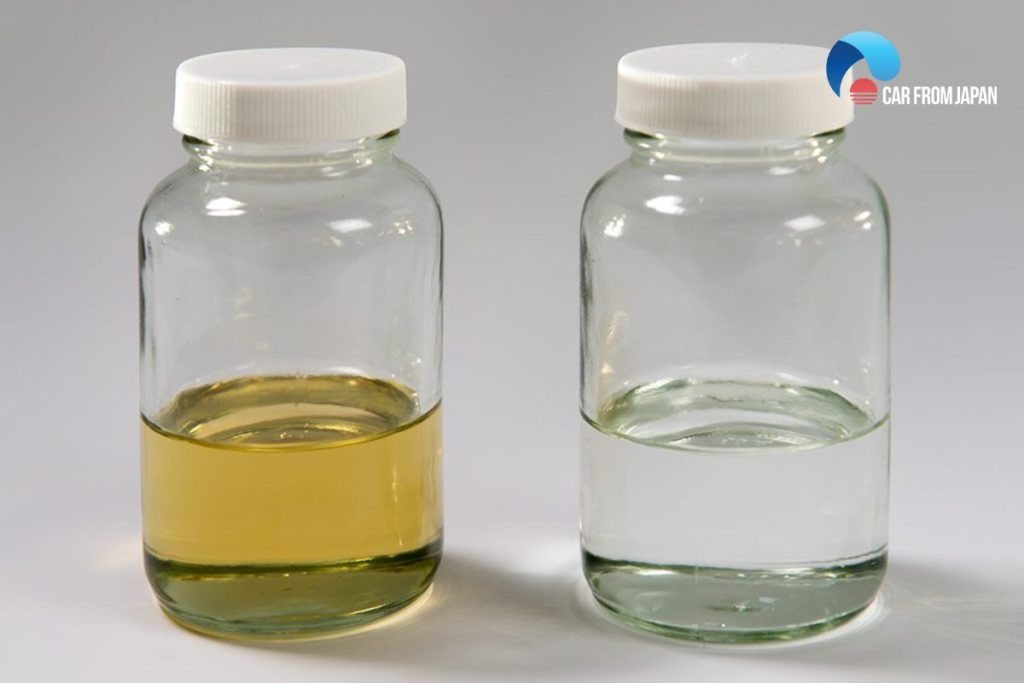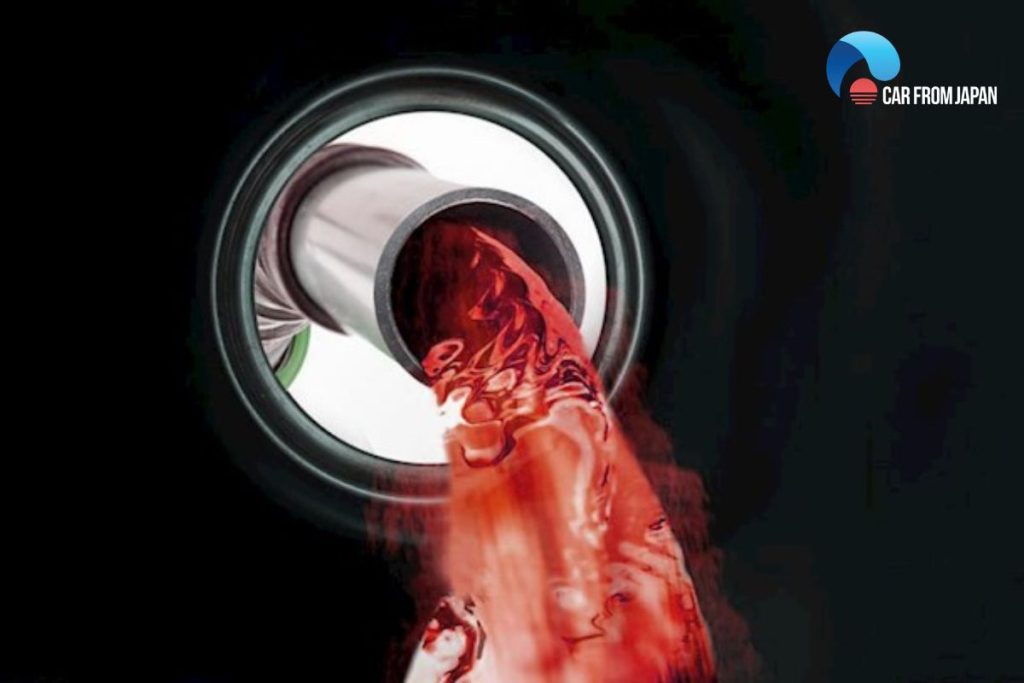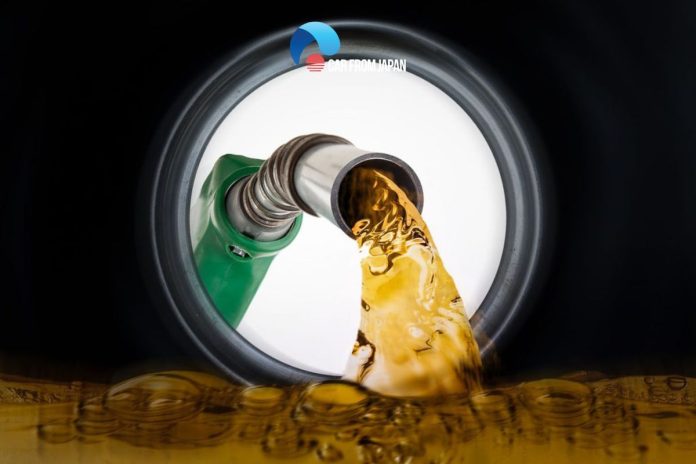Have you ever wondered what color is diesel fuel, whether it is the same color as gasoline fuel or not? For many drivers, diesel fuels often come up with the red color at the stations.
However, the truth is that diesel isn’t always red, but it comes in different varieties suitable for specific uses. Let’s decode the diesel fuel color to understand more about this type of fuel!
Contents
- Things You Don’t Know About Diesel Fuel?
- What Color Is Diesel Fuel: Understand Diesel Fuel Colors & Quality
- Some Notes When Using Diesel Fuel
- FAQs on Diesel Colors
- Is green diesel actually eco-friendly?
- Can the color of diesel fuel affect engine performance in high-performance Japanese cars?
- Why is red diesel illegal for street use in most countries?
- Do all countries use the same diesel color codes?
- Why do some performance tuners avoid colored diesel fuels?
- Does biodiesel have a different color than petroleum diesel?
- Conclusion
Things You Don’t Know About Diesel Fuel?
Diesel is a versatile fuel, as it can be used for most types of transportation today, from roads, and waterways, to railways.
In particular, diesel oil is also used for vehicles with large loads such as semi-automatic forklifts, oil forklifts, or even gas turbines.
Diesel fuel is also known as gazole oil (DO), the characteristic of diesel oil is a liquid fuel, refined from petroleum with a distillation composition between kerosene and industrial lubricating oil.
They are usually heavier than gasoline and kerosene and have an evaporation temperature of 175 – 370 degrees Celsius.

In 1910, diesel engines began to be applied on submarines and ships. Since 1970, this engine has been widely used in vehicles such as SUVs, passenger cars, trucks, forklifts, etc.
Diesel possesses many advantages suitable for a variety of vehicles. However, diesel oil also has certain limitations such as, when burned, diesel will produce compounds such as nitrogen, starch, hydrocarbons, carbon monoxide, and carbon dioxide which can harm the environment.
Though was known as a single product, there are still different types of diesel fuel:
- Petroleum diesel
- Synthetic diesel
- Biodiesel
- Hydrogenated oils and fats
- Dimethyl ether (DME)
Remember to consult a qualified mechanic to help you choose the most suitable diesel fuel for your specific needs and ensure optimal performance for your vehicle. So what color should diesel oil be?
Related Post: What Are The Flash And Fire Points Of Diesel Fuel?
What Color Is Diesel Fuel: Understand Diesel Fuel Colors & Quality
Generally, you can distinguish the color of diesel oil into 2 types: clear and dyed colors (red and blue-dyed). In contrast, gasoline often comes in a clear to pale straw or pink color, significantly lighter than diesel.
Color variations in fuels are influenced by the type of crude oil used in their production and additives blended for performance improvements or marker dyes.
Clear diesel
As the name suggests, the clear diesel fuel is clear or slightly green in appearance and it’s designed to use for most on-road vehicles. This natural color arises from the refining process and the inherent properties of the hydrocarbons in the fuel.
The tint of green shows that the diesel fuel is fresh while a pale yellow color which means that the fuel is a bit old.
However, that should not be a matter of concern as being fresh or not doesn’t affect the combustion capacity of diesel fuel.
Clear diesel is available for sale at gas stations throughout the U.S. and is the standard fuel for most on-road diesel vehicles from Sedans to SUVs and marine vehicles.
Besides, light and heavy-duty trucks commonly utilize clear diesel fuel, including pickups, delivery vehicles, and semi-trucks.
Since clear diesel has low sulfur levels and is legally taxable any vehicle that has a diesel engine and is licensed by the state for on-road use must use clear fuel. This is a taxable fuel and therefore priced higher than dyed diesel fuel.
Dyed diesel fuel

Dyed diesel means that the diesel fuel is colored with a chemical additive for identification.
This fuel always comes in 3 different colors: red, green, and blue diesel fuel while red-dyed diesel is the most common diesel used for off-road vehicles and equipment.
Have you ever wondered why the diesel is dyed with different colors? The main reason is to differentiate it from the taxable diesel used on the public road (clear diesel).
This type of diesel is commonly designed for off-road vehicles such as Construction machinery, agricultural equipment, or generators.
By coloring the diesel fuel, the authorities can easily prevent the misuse of tax-exempt off-road diesel in on-road vehicles.
Earlier diesel fuel that was used off-road had high sulfur content. But now, the government has decided to supply the 15ppm sulfur fuels to control the pollution.
Dyed diesel fuel may not be available at all the fuel stations, however, you may occasionally stump onto someplace.
As this type of diesel fuel is relatively cheap people may think of using it for the on-road vehicle. This will not affect the working of your car but it’s the criminal action including fines and potential vehicle seizure.
Some Notes When Using Diesel Fuel
- In case diesel oil gets on clothes or the body, the user needs to immediately change into new clothes and wash the exposed skin area with water and soap to avoid burns. If the skin feels burning, users need to see a doctor for timely treatment.
- When diesel oil accidentally gets into your eyes, rinse immediately with water and go to the nearest medical facility for examination.
- Diesel fuel is widely used in everyday life, however, this type of fuel releases toxic emissions that affect the environment and human health.
Read More: How To Get The Diesel Smell Out of Clothes?
FAQs on Diesel Colors
Is green diesel actually eco-friendly?
Not really. The green tint is just a dye. It doesn’t mean the fuel has special additives or is “bio.”
Eco-performance depends on sulfur content and blend, not color.
Can the color of diesel fuel affect engine performance in high-performance Japanese cars?
No. Color itself doesn’t matter. What matters is whether it’s high-sulfur vs. ultra-low sulfur, or whether it’s dyed “off-road” diesel.
Why is red diesel illegal for street use in most countries?
Because it’s taxed at a lower rate for agriculture, heating, or construction.
Using it in a Nissan GT-R or Supra on public roads could get you fined heavily if tested.
Do all countries use the same diesel color codes?
No. In the U.S., red = off-road, clear = regular road diesel.
In the U.K., red diesel is for agriculture. In Japan, diesel is usually undyed or clear.
Why do some performance tuners avoid colored diesel fuels?
Because certain dyes can stain tanks, filters, and lines, making it obvious if the car ever used untaxed fuel, even long after switching back.
Does biodiesel have a different color than petroleum diesel?
Sometimes. Biodiesel can be golden, amber, or even slightly greenish, depending on the feedstock (soy, palm, canola). But legally, it may still be dyed.
Watch this video from Just Think to learn more about Jet fuel, diesel and gasoline!
Conclusion
So in the end, what color is diesel fuel? Diesel fuel is not available in a single color but can show off with different shades based on the specifications and additives.
Typically, the on-road diesel will come in clear or slightly yellow whereas, the dyed diesel fuel has more colors and is used for equipment or vehicles, not traveling on the public road.
By understanding the differences between clear and dyed diesel fuel, you can protect yourself from legal repercussions and ensure the optimal performance of your vehicle!



